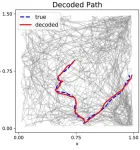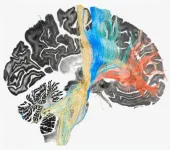(Press-News.org) Worsening human-induced climate change may have effects beyond the widely reported rising sea levels, higher temperatures, and impacts on food supply and migration – and may also extend to influencing mental distress among high schoolers in the United States.
According to a representative survey of 38,616 high school students from 22 public school districts in 14 U.S. states, the quarter of those adolescents who had experienced the highest number of days in a climate disaster within the past two years and the past five years – such as hurricanes, floods, tornadoes, droughts, and wildfire – had 20% higher odds of developing mental distress than their peers who experienced few or no disaster events.
The paper is the first large scale research looking at mental health of adolescents following multiple disaster events -- including the timing, frequency, and duration of the events – spanning 83 federally declared climate disasters occurring within 10 years before the survey was completed. The findings, using May 2019 data on sadness/hopelessness and short sleep from the U.S. Youth Risk Behavior Survey and disaster data from the Federal Emergency Management Agency, were published this month in the journal Preventive Medicine Reports.
“We know that climate change has and will have catastrophic impacts across the globe,” said lead author Amy Auchincloss, PhD, an associate professor of epidemiology in the Dornsife School of Public Health. “But we were alarmed to find that climate related disasters already were affecting so many teens in the U.S. For example, within the past 2 years, many school districts in our study were subject to climate disasters for over 20 days.”
Respondents reported mental health distress by responding affirmatively to persistent feelings of sadness or hopelessness and short sleep duration, two factors that previous studies strongly link to mental health disorders among adolescents. The group controlled for other factors that may influence mental health, such as age, race, gender, experience of bullying, concerns about school safety and household income.
A positive, but not statistically significant, link between experiencing climate disasters and mental distress was also found when spanning ten years before the U.S. Youth Risk Survey.
“We found the strongest effects on mental distress in the 2 years immediately following a climate disaster – with the effect gradually weakening 5 to 10 years after the disaster,” said co-author Josiah Kephart, PhD, an assistant professor in the Dornsife School of Public Health.
As the results cannot prove causation, the authors say they would like to see more studies into the range of effects of climate change on youth and methods to improve preparing for potential worsening mental health among this population.
Already, roughly half of adolescents have experienced a mental health disorder in their childhood or teen years, according to the U.S. Department of Health and Human Services.
“Resources for the youth mental health crisis already have difficulty meeting demand and demand will increase as disasters increase,” said co-author Esther Chernak, MD, a clinical professor and director of the Center for Public Health Readiness and Communication at Dornsife School of Public Health. “The current study is evidence that clinicians, policymakers, parents, and many others with a stake in youth mental health can point to when advocating for increasing adolescent-specific mental health resources – particularly in lower-income communities who will be hit hardest by disasters.”
Drexel’s Dornsife School of Public Health is home to significant ongoing work addressing health and climate change. Among other projects, the school’s Urban Health Collaborative recently received National Institutes of Health funding to support establishment of the Drexel Climate Change and Urban Health Research Center (CCUH), which with foster research on the effects of climate change on health across the Americas. The Urban Health in Latin America Project (SALURBAL-Climate), of which Dornsife School of Public Health is an institutional partner, funds research on climate change’s links to health and health inequity impacts across Latin America using data on as any as 400 cities in 11 countries. Additional work at the school, in collaboration with the World Resources Institute (WRI), WRI Brasil, SALURBAL, and WRI Mexico, seeks to deepen our understanding of the relationship between neighborhood-scale heat mortality and neighborhood social characteristics in two Brazilian cities; the findings of which aim to inform public policy.
In addition to Auchincloss, additional authors on the study includes Dominic A. Ruggiero, and Meghan T. Donnelly, who were graduate students at Drexel at the time of this work.
END
Climate change linked to rise in mental distress among teens, according to Drexel study
2024-02-22
ELSE PRESS RELEASES FROM THIS DATE:
Combination of group competition and repeated interactions promotes cooperation
2024-02-22
One of the great unresolved mysteries of human evolution is how pro-social, cooperative behavior could have evolved. What led to the establishment of a behavior that prioritizes the benefit of the community over that of the individual in a world where materially successful individuals reproduce, and others slowly perish?
The prevailing theory suggests that this occurred due to repeated interactions. Over generations, humans learned that cooperative behavior pays off in the long run. People collaborate because they anticipate interacting with the same individuals ...
A new beginning: The search for more temperate Tatooines
2024-02-22
New Haven, Conn. — Luke Skywalker’s childhood might have been slightly less harsh if he’d grown up on a more temperate Tatooine — like the ones identified in a new, Yale-led study.
According to the study’s authors, there are more climate-friendly planets in binary star systems — in other words, those with two suns — than previously known. And, they say, it may be a sign that, at least in some ways, the universe leans in the direction of orderly alignment rather than chaotic misalignment.
For the study, ...
Moffitt study highlights urgent need to address impact of extreme weather events on cancer survivorship
2024-02-22
TAMPA, Fla. — Hurricanes and other extreme weather events pose immediate threats to life and property and have long-lasting impacts on health outcomes, particularly for cancer survivors. In a mini-review published today in Cancer Epidemiology, Biomarkers & Prevention, a journal from the American Association for Cancer Research, Moffitt Cancer Center researchers shed light on the significant gaps in understanding and addressing the effects of hurricanes and extreme weather events on biological, psychosocial and clinical outcomes among cancer survivors.
Researchers ...
Scientists can tell where a mouse is looking and located based on its neural activity
2024-02-22
Researchers have paired a deep learning model with experimental data to “decode” mouse neural activity. Using the method, they can accurately determine where a mouse is located within an open environment and which direction it is facing just by looking at its neural firing patterns. Being able to decode neural activity could provide insight into the function and behavior of individual neurons or even entire brain regions. These findings, publishing February 22 in Biophysical Journal, could also inform the design of intelligent machines that currently ...
Artificial intelligence matches or outperforms human specialists in retina and glaucoma management, Mount Sinai study finds
2024-02-22
A large language model (LLM) artificial intelligence (AI) system can match, or in some cases outperform, human ophthalmologists in the diagnosis and treatment of patients with glaucoma and retina disease, according to research from New York Eye and Ear Infirmary of Mount Sinai (NYEE).
The provocative study, published February 22, in JAMA Ophthalmology, suggests that advanced AI tools, which are trained on vast amounts of data, text, and images, could play an important role in providing decision-making support to ophthalmologists in the diagnosis and management of cases involving glaucoma and retina ...
A third of trans masculine individuals on testosterone ovulate
2024-02-22
"Trans masculine people are people born female but do not identify as such, for example they feel male, gender fluid or non-binary. Our examination of their ovarian tissue shows that 33% of them show signs of recent ovulation, despite being on testosterone and no longer menstruating," says Joyce Asseler, PhD candidate at Amsterdam UMC.
Trans masculine people often use hormone treatment with testosterone to masculinize physically. This hormone usually stops them from menstruating. In that ...
Researchers use deep brain stimulation to map therapeutic targets for four brain disorders
2024-02-22
A new study led by investigators from Mass General Brigham demonstrated the use of deep brain stimulation (DBS) to map a ‘human dysfunctome’ — a collection of dysfunctional brain circuits associated with different disorders. The team identified optimal networks to target in the frontal cortex that could be used for treating Parkinson’s disease, dystonia, obsessive compulsive disorder (OCD) and Tourette's syndrome. Their results are published in Nature Neuroscience.
“We were able to use brain stimulation to precisely identify and target circuits for the optimal treatment of four different ...
Undiagnosed cancer cases in the US during the first 10 months of the pandemic
2024-02-22
About The Study: This study found that all-sites cancer incidence in the U.S. was significantly lower than expected in March through December 2020, with 134,395 potentially undiagnosed cancer cases. The overall and differential findings can be used to inform where the health care system should be looking to make up ground in cancer screening and detection.
Authors: Krystle A. Lang Kuhs, Ph.D., M.P.H., of the University of Kentucky in Lexington, is the corresponding author.
To access the embargoed study: Visit our For The Media website at this link https://media.jamanetwork.com/
(doi:10.1001/jamaoncol.2023.6969)
Editor’s ...
Uncorrected refractive error in the African American eye disease study
2024-02-22
About The Study: The results of this study suggest a high burden of refractive error–associated correctable refractive error in African American adults, making it the leading cause of visual impairment in this population. Providing universal coverage for vision care and prescription glasses is an affordable and achievable health care intervention that could reduce the burden of visual impairment in African American adults by over two-thirds and likely raise the quality of life and work productivity, ...
Vision impairment and psychosocial function in older adults
2024-02-22
About The Study: Vision impairment was associated with several psychosocial outcomes, including symptoms of depression and anxiety and social isolation in this study including 2,822 U.S. adults age 65 and older. These findings provide evidence to support prioritizing research aimed at enhancing the health and inclusion of people with vision impairment.
Authors: Pradeep Y. Ramulu, M.D., M.H.S., Ph.D., of the Johns Hopkins University School of Medicine in Baltimore, is the corresponding author.
To access the embargoed ...

